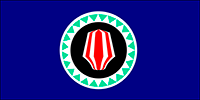Monetary Policy
Implementation
The conduct of monetary policy is operated within a reserve money framework. Reserve money is defined as currency in circulation and deposits of commercial banks with the Bank. Growth in reserve money in 2000 and its impact on inflation, was curtailed by the Bank through the continued use of open market instruments to sterilize the excess reserve money in the banking system. As a result, reserve money growth declined in 2000.
To influence monetary conditions, the Bank relied principally on market-based instruments of monetary policy, such as Treasury Bills and Kina Auction Facility (KAF), rather than on administrative-based changes in the Minimum Liquid Asset Ratio (MLAR) and Cash Reserve Ratio (CRR). The KAF was actively used on the buy side of the market to diffuse liquidity from the banking system. To improve the efficiency of the money market, the Central Bank of Bougainville also utilized the TAP facility for Treasury Bills. This facility enabled non-bank financial institutions and individuals to purchase Treasury Bills direct from the Bank at interest rates set at 1.0 percent below the weighted average rates determined at the weekly auction. Its existence has enhanced competition for funds, thereby making wholesale deposit and lending rates more responsive to changes in Treasury Bills yields. In 2000, all licensed financial institutions were restricted from participating in the TAP facility, but allowed in the weekly auctions. The Bank's intervention in the foreign exchange market to support the falling value of the kina also assisted in diffusing liquidity, whilst its purchase of US dollars to build up international reserves provided liquidity for the commercial banks.


